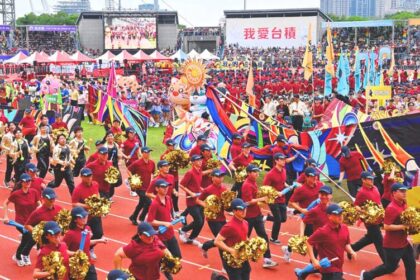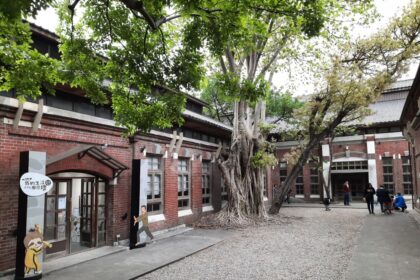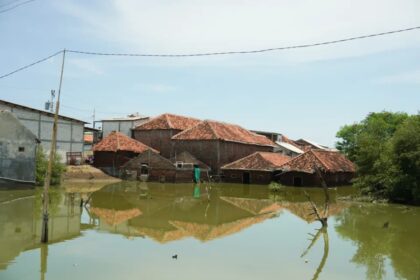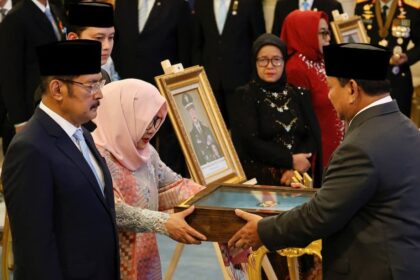A nationwide directive as haze season nears
Thailand has moved to preempt its annual haze cycle, with Prime Minister Anutin Charnvirakul directing every provincial governor to prepare for wildfires, smoke and dangerous fine dust pollution as the cool, dry season sets in. The Nov. 13 order, issued in his role as National Disaster Prevention and Mitigation Commander, instructs ministries and local authorities to coordinate closely, activate emergency command centers when readings climb, and report continuously to the Department of Disaster Prevention and Mitigation. The goal is simple and urgent, keep PM2.5 in check before the air turns toxic.
Under the directive, agencies must target the core sources that drive winter smog. The Ministry of Natural Resources and Environment will step up forest patrols, enforce bans on burning and prosecute arson. The Ministry of Agriculture and Cooperatives will regulate agricultural burning and apply penalties, including removing violators from government support. Local officials, from district chiefs to village leaders, are told to police community burning, educate residents on safer practices and impose fines when needed. Pollution control teams will also clamp down on dust from vehicles, construction and industrial activity, while health agencies prepare to protect vulnerable groups when the air deteriorates.
When pollution levels begin to trend upward or exceed safety thresholds, governors are instructed to activate single-command operations, coordinate all responders and keep measures in place until conditions stabilize. The Public Relations Department will broadcast rules and penalties, and health teams will set up dust free rooms and safety zones for those most at risk. It is a whole-of-government playbook aimed at a recurring seasonal threat that affects millions.
What the order requires on the ground
The directive translates to a tight focus on prevention, enforcement and health protection. It frames a season-long campaign around sources known to drive PM2.5, with clear roles for ministries and provincial leaders. It also codifies faster response when air quality suddenly worsens, something many cities have struggled to deliver in past seasons.
Forest and farmland
Forest fires and open burning in fields are prime drivers of haze during the dry months. Natural Resources and Environment officials will intensify patrols in fire prone forests and wildlife sanctuaries, restrict entry to high-risk zones and use satellite hot spot data to deploy teams quickly. Agriculture officials will regulate burning windows, encourage alternatives like mulching and composting, and bar repeat violators from state programmes and subsidies. Local leaders are told to map community risk areas, set up watch networks, and sanction illegal burning.
Transport, construction and factories
The Ministry of Transport and the Ministry of Industry will target soot from diesel engines, construction dust and industrial emissions. Expect roadside checks for black smoke, tighter inspections at bus and truck depots, more dust screens and wheel wash systems at building sites, and on-site monitoring equipment in factories. Provincial public works offices will require contractors to suppress dust and limit activities that kick up particles on days with poor dispersion.
Health and communication
Local health offices are preparing mobile units to advise residents on masks and indoor air safety, alongside dust free rooms and safety zones for children, older adults and those with heart or lung disease. The government’s communications arm will push clear messages about rules, penalties and practical steps people can take on high-smog days, creating a feedback loop that promotes compliance as well as personal protection.
Why PM2.5 spikes in Thailand
PM2.5 refers to particles 2.5 micrometers or smaller. These particles are tiny enough to reach deep into the lungs and enter the bloodstream, and long exposure is associated with asthma, cardiovascular disease and higher mortality risk. The World Health Organization recommends a 24 hour average of 15 micrograms per cubic meter. Thailand’s current safety threshold for health advisories is higher, at 37.5 micrograms per cubic meter, which means health risks can occur even when official alerts have not yet been triggered.
Thailand’s pollution profile changes by region and season. Assessments carried out with the Climate and Clean Air Coalition identify agricultural residue burning as the single largest source of particulate matter nationwide during the haze season, with additional contributions from charcoal production for cooking, industry, transport and open waste burning. In and around Bangkok, diesel exhaust, construction dust and weather patterns combine with smoke from nearby provinces to drive readings higher during winter inversions.
Scientific modeling supports that picture. Land use regression work in Bangkok found that open biomass burning and meteorological conditions were stronger predictors of daily PM2.5 than traffic alone. A large portion of fires occur far from the capital and even outside Thailand, so seasonal haze often has a cross border component. That is why officials stress action inside Thailand and diplomacy with neighbors during peak months.
Hot spot data underscores the scale of the challenge. In 2024, the Pollution Control Department reported that 68 percent of hot spots were recorded in forest zones, 24 percent in agricultural zones and 8 percent in urban areas. More than ten thousand hot spots were detected early in the year, with rice paddies leading agricultural burns, followed by forest areas and general farming zones. Officials say early agricultural burning in provinces around Bangkok frequently worsened city air during stagnant weather.
Emergency steps this season, from Bangkok to the border
Thailand has been layering emergency responses onto longer term plans. Bangkok’s city hall has rolled out a 10 action framework that includes stricter vehicle enforcement, expansion of low emission zones across all 50 districts, tighter dust rules for construction vehicles, continuous factory emission monitoring and stronger alerts to the public. Campaigns like This Car Reduces Dust encourage preventive maintenance. City agencies have prepared dust free rooms in schools, promoted work from home during critical weeks, and launched tree planting to buffer roadside dust.
Bangkok has also developed rainmaking operations to disperse particles when weather allows. The city has coordinated with the Hua Hin Royal Rainmaking Centre, energy companies and the air force to supply aircraft, dry ice and flight clearances over central Bangkok. City officials say more than 160,000 vehicles were ordered to replace air filters and oil, while a green vehicle program signed up thousands of trucks to meet tighter standards. Remote work arrangements are planned for tens of thousands of municipal employees when the air turns unsafe.
When pollution surged early this year, the city closed more than 350 schools across dozens of districts, the largest wave of closures since 2020. At the national level, authorities temporarily imposed a burning ban and told provincial teams to step up checks in high-risk areas as forecasts showed poor air circulation. The Public Health Ministry distributed more than one million N95 masks and the Bangkok administration delivered hundreds of thousands more to residents in affected neighborhoods.
During a severe spike earlier in the year, then Prime Minister Paetongtarn Shinawatra announced expedited relief steps, from free public transport for a week to tighter enforcement on black smoke and construction dust, and wider use of artificial rain. In a message to the public, she called for immediate action alongside longer term plans.
Paetongtarn’s office described the urgency in plain terms.
“The PM2.5 situation is still concerning, so I have urged relevant agencies to implement additional urgent measures to address this issue in the short term.”
Those measures complemented ongoing efforts by the Environment Ministry to educate farmers on alternatives to burning, along with tighter coordination between Bangkok and surrounding provinces so dust control does not stop at city borders.
Enforcement, law and regional cooperation
The next test is whether rules on paper translate to cleaner air on the street. Researchers who mapped Thailand’s air quality laws and institutions point to recurring enforcement gaps. Agencies announce new measures each year, from burning bans to truck inspections, yet many of the dirtiest vehicles still operate and burning persists in fields and forest margins. Staff, budgets and overlapping mandates often slow effective enforcement.
Public pressure has grown. Environmental advocates and local groups filed a lawsuit against national agencies for failing to protect the right to clean air, pressing for ambient standards aligned with WHO guidance, tighter factory emission limits and public disclosure of PM2.5 emissions. Lawmakers, meanwhile, have worked on clean air legislation designed to put health first, fund support for those harmed by pollution and strengthen local capacity to respond. Another policy step has been the designation of pollution control zones in Bangkok and four northern provinces, which gives authorities greater power to restrict burning, tighten fuel and vehicle standards, add monitors and launch faster emergency protocols. The move is pitched as both a health and economic measure in regions hit hardest by seasonal haze.
Transboundary haze remains a factor during peak months. Thai leaders have raised PM2.5 to a regional agenda item and asked ASEAN partners to coordinate curbs on agricultural burning. The foreign ministry has been tasked with using existing frameworks to build cooperation on seasonal smoke, which often travels across borders before dispersing.
Health risks and protecting vulnerable groups
Children, older adults and people with lung or heart disease are the most vulnerable during high-smog periods. UNICEF estimates that about 13.6 million children in Thailand face high exposure to PM2.5. Medical experts warn that damage can begin before birth. Exposure has been linked to premature birth and low birth weight, while later in life it raises the risks of asthma, pneumonia and chronic respiratory illness. Adults face higher risks of stroke, heart disease, diabetes and lung cancer with long exposure, and daily spikes can trigger acute symptoms.
UNICEF Thailand urged government and business to move faster on source reduction and protection for children.
“This alarming situation demands urgent action to safeguard children’s health and well-being.”
Thailand’s health agencies have started to classify disorders caused by PM2.5 as environmental diseases and to expand protective services, including dust free rooms and community safety zones, in line with the new seasonal directive. During recent spikes, the Public Health Ministry deployed emergency medical teams and issued mask guidance, while Bangkok’s teams escalated alerts and opened temporary safe spaces for students and older residents. City residents are encouraged to check air readings several times a day during haze events and to adjust routines when the air stagnates.
What people can do during high smog days
- Use a well fitted N95 or KN95 mask outdoors. Cloth or surgical masks offer limited protection from fine particles.
- Limit time outside, especially strenuous activity, when PM2.5 readings rise into orange, red or purple categories.
- Keep indoor air as clean as possible. Close windows during spikes, use portable air cleaners with HEPA filters if available and avoid indoor burning such as incense.
- Check reliable air quality apps and official alerts to time errands or commutes for cleaner periods in the day.
- Report open burning, black smoke from vehicles and violation of construction dust rules to local hotlines or official apps when available.
Linking clean air and climate policy
Thailand’s air and climate strategies increasingly overlap. Analysis supported by the Climate and Clean Air Coalition identified 19 priority measures that, if fully implemented, could cut particulate matter by as much as 70 percent by 2030. Those same measures could reduce national carbon dioxide by nearly a quarter and methane by about two thirds. The modeling estimated a 22 percent reduction in average exposure to fine particles, which translates to more than three thousand avoided premature deaths each year by 2030.
Capturing those gains requires more than technical plans. Stakeholder surveys point to institutional and financial barriers that, if left unaddressed, could cut achievable reductions in half. Recommended steps include strong interagency coordination, fiscal reforms that direct resources to local action, targeted training for provincial and municipal teams, integrated inventories that track both climate and air pollutants, and regular reviews to fine tune policies. Subnational plans tailored to regional sources, for example crop residue management in the North and industrial dust control in urban corridors, can make national policy work on the ground.
Regional diplomacy remains part of the equation. Since open burning contributes to haze beyond national borders, Thai officials have sought joint efforts with neighbors on agricultural practices, market incentives and law enforcement. Combined with tighter controls inside Thailand and the new seasonal command structure, those steps can reduce the worst spikes that have become a staple of the dry season.
What to Know
- Prime Minister Anutin ordered all provincial governors to prepare seasonal measures against wildfires, haze and PM2.5, with single-command centers to activate during spikes.
- Forest patrols, regulated farm burning, diesel smoke checks, construction dust control and factory monitoring are central to the plan.
- Health agencies will set up dust free rooms and safety zones and deploy mobile units to protect vulnerable groups.
- Bangkok is expanding low emission zones, tightening vehicle and construction rules, and preparing rainmaking operations where conditions allow.
- During recent surges, authorities closed more than 350 schools, distributed over a million N95 masks and temporarily banned outdoor burning.
- UNICEF says 13.6 million children in Thailand are highly exposed to PM2.5 and calls for faster action to reduce sources and protect kids.
- Studies show agricultural burning, weather and cross border smoke drive seasonal haze, with traffic and construction adding to urban loads.
- Integrated clean air and climate measures could cut particles by up to 70 percent by 2030 and avoid thousands of premature deaths, if enforcement and coordination improve.
- Thailand has moved to designate pollution control zones in Bangkok and northern provinces and is seeking ASEAN cooperation on transboundary haze.












